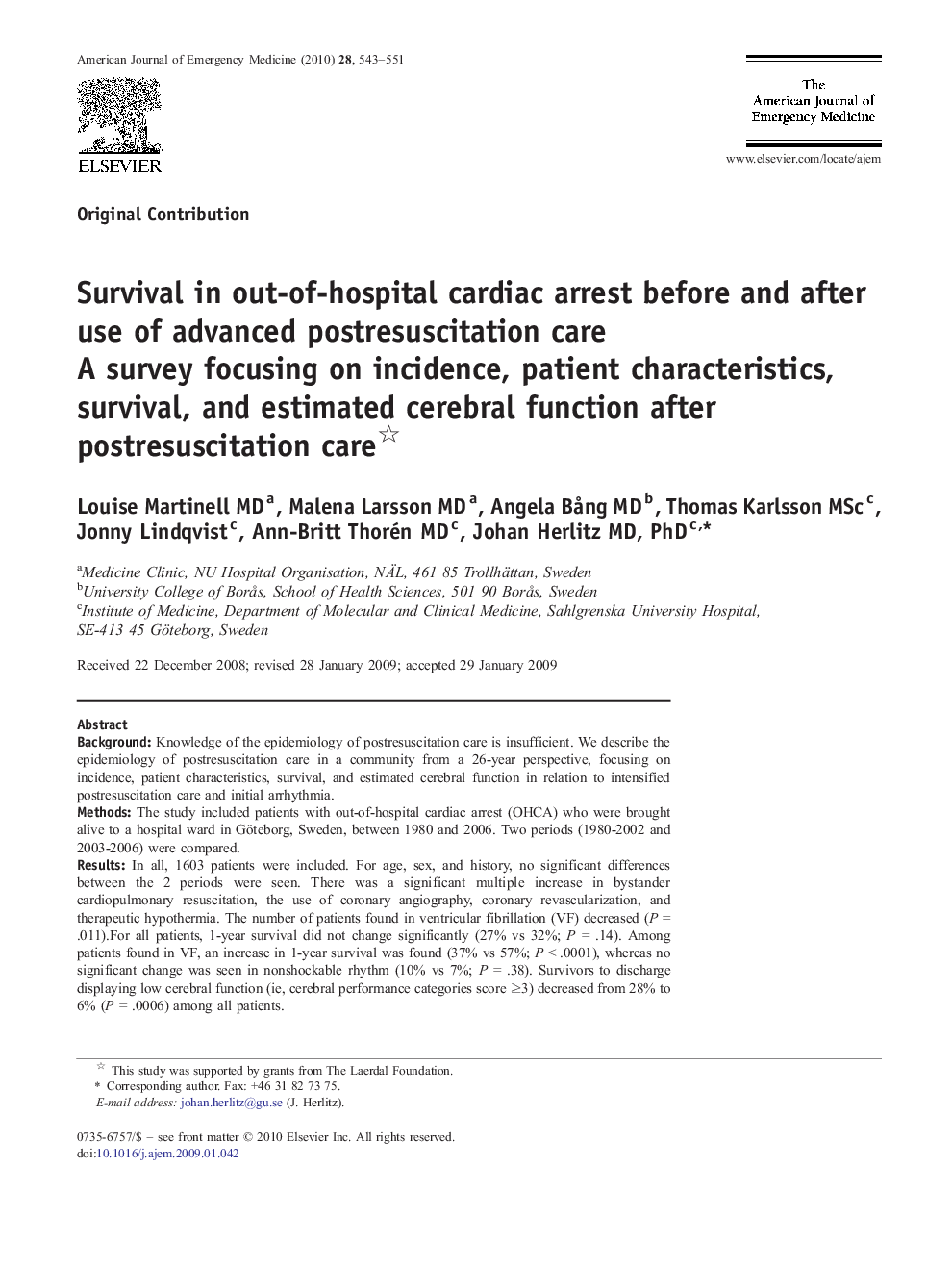| کد مقاله | کد نشریه | سال انتشار | مقاله انگلیسی | نسخه تمام متن |
|---|---|---|---|---|
| 3226612 | 1588157 | 2010 | 9 صفحه PDF | دانلود رایگان |

BackgroundKnowledge of the epidemiology of postresuscitation care is insufficient. We describe the epidemiology of postresuscitation care in a community from a 26-year perspective, focusing on incidence, patient characteristics, survival, and estimated cerebral function in relation to intensified postresuscitation care and initial arrhythmia.MethodsThe study included patients with out-of-hospital cardiac arrest (OHCA) who were brought alive to a hospital ward in Göteborg, Sweden, between 1980 and 2006. Two periods (1980-2002 and 2003-2006) were compared.ResultsIn all, 1603 patients were included. For age, sex, and history, no significant differences between the 2 periods were seen. There was a significant multiple increase in bystander cardiopulmonary resuscitation, the use of coronary angiography, coronary revascularization, and therapeutic hypothermia. The number of patients found in ventricular fibrillation (VF) decreased (P = .011).For all patients, 1-year survival did not change significantly (27% vs 32%; P = .14). Among patients found in VF, an increase in 1-year survival was found (37% vs 57%; P < .0001), whereas no significant change was seen in nonshockable rhythm (10% vs 7%; P = .38). Survivors to discharge displaying low cerebral function (ie, cerebral performance categories score ≥3) decreased from 28% to 6% (P = .0006) among all patients.ConclusionAfter the introduction of a more intensified postresuscitation care, there was no overall improvement in survival but signs of an improved cerebral function among survivors. There was a marked increase in survival among patients found in a shockable rhythm but not among those found in a nonshockable rhythm.
Journal: The American Journal of Emergency Medicine - Volume 28, Issue 5, June 2010, Pages 543–551